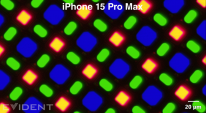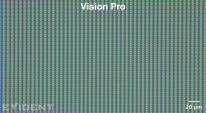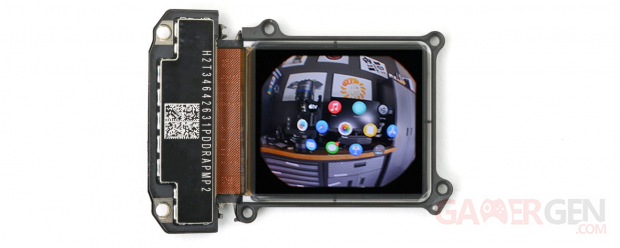PlayStation VR 2, Meta Quest 3 and now Apple Vision Proall compete in ingenuity to make consumers understand (or make believe) that they will have an experience worthy of what they can experience on a flat screen, with added immersion. But what is it really? The high-tech repair site iFixit looked into the question, and more precisely into the famous space computer with the bitten apple.
After having demonstrated that theApple Vision Pro was as complex to dismantle as it was difficult to repair, iFixit back with a second video, dedicated to the definition of the latter. To do this, the team took out the digital microscope to find out if the 4k designation was real or simply (as is often the case) marketing.
First interesting fact, the team noticed that certain pixels located at the edge of the headset remained permanently off, thus reducing the advertised definition of the headset.
Even more astonishing, the size of each pixel is 7.5 µm, the equivalent of a human red blood cell! At this point, the grid effect is relegated to the status of antiquity.
iFixit affirm that it’s as if you could fit 54 pixels of the VisionPro in the space of a single pixeliPhone 15 Pro Maxprodigious!


Let’s stay on this definition story. The corners of the screen being cut off, it took some trickery to correctly calculate all the pixels, the total is estimated at 23.4 million.
Surprise ! Apple would have underestimated (some would say for the sake of readability) the number of pixels of its own helmet, since it was announced at 23 million pixels.
If the 4K definition is 8 million pixels and the VisionPro is 23 million pixels, this means that the firm of Cupertino would have chosen, out of pure concern marketingto maintain the 4K name, while its product goes well beyond!

Also, Apple may very well have been afraid of disappointing. It is true that with each headphone release, many people rush on social networks to bring out the eternal “yeah meh, it’s not as clear as on my 4K OLED HDR TV “, so you might as well keep a low profile and create a surprise!
To conclude and to see things more clearly, here is a comparison table of the screens of the different headsets:
| Helmet | Display technology | Definition by eye |
| Oculus Rift | HTC Vive (2016) | OLED | 1080×1200 |
| Valve Index | Oculus Quest (2019) | LCD/OLED | 1440×1600 |
| Meta Quest 2 (2020) | LCD | 1680×1870 |
| Meta Quest 3 (2023) | LCD | 2064×2208 |
| Bigscreen Beyond (2023) | Micro-OLED | 2560×2560 |
| Apple Vision Pro (2024) | Micro-OLED | 3660×3200 |
